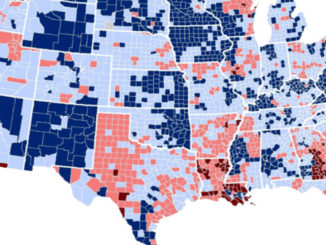
by Admin, the WSJ
The two parties represent radically different slices of the American economy.
America’s political polarization is almost complete. Its two main political parties increasingly represent two different economies. And they barely overlap.
Democrats can be found in educated cities and suburbs where professional jobs are plentiful. Republicans live in working-class and rural communities, home to agriculture and low-skill manufacturing.
It Starts With the Economy
Let’s look at GDP, or the value of goods and services produced, to understand how the two parties are divided. These days, Democratic House districts are doing substantially better: Two-thirds of the nation’s GDP comes from those areas, with Republican districts making up the rest.

This is striking, because the Republican share of GDP is shrinking. Even though the party controls more House districts than a decade ago, those districts account for less economic activity, Brookings Institution data show.
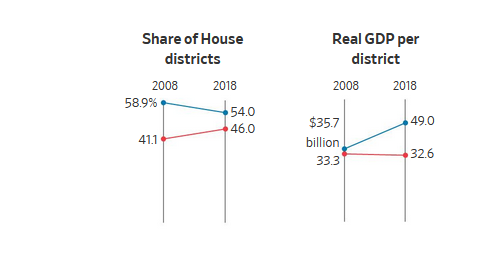
You can see the change most dramatically by looking at House districts ranked by their contribution to GDP. A decade ago, Democrats represented House districts with both the most and least economic output.
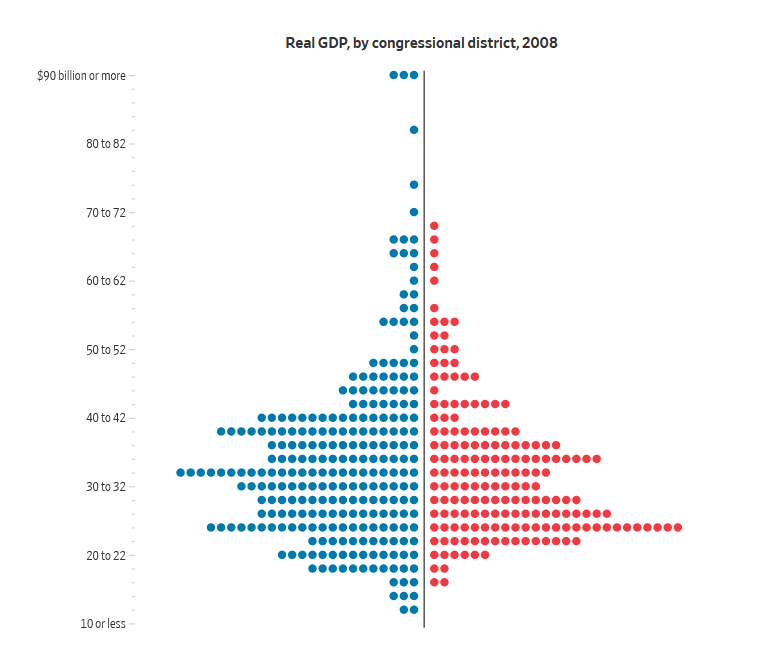
Today, the picture is very different. Democrats are even more dominant among high-producing districts, while Republicans now represent more of those with the least economic activity.
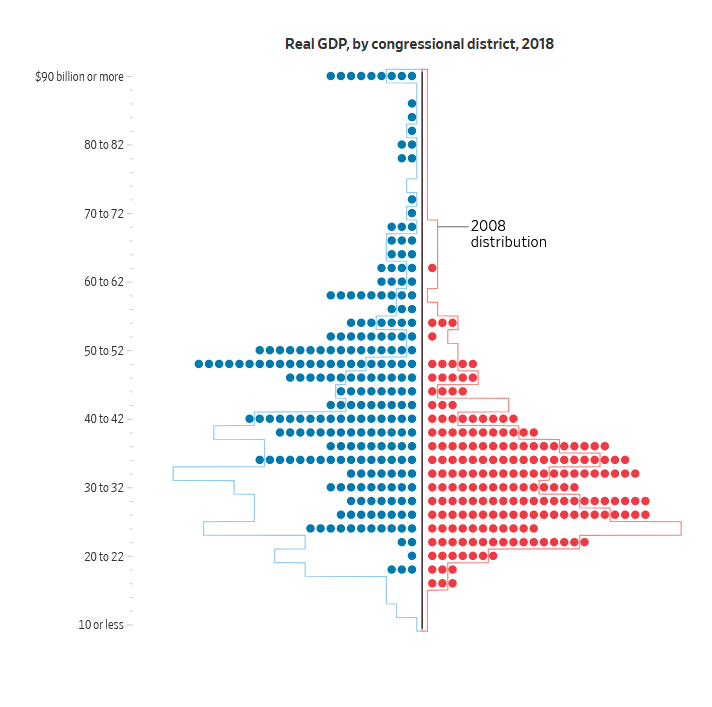
The Paycheck Picture
Household income tells a similar story. A decade ago, median household income was about the same for each party. Since then, it has jumped nearly 17% in Democratic districts while falling 3% in Republican ones.
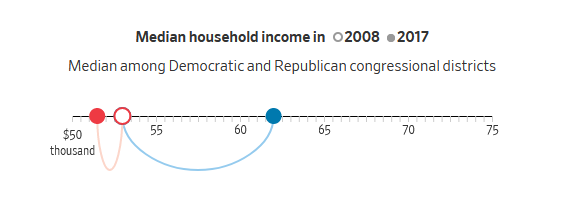
What’s Behind the Split?
Blue Industries: Democrats represent districts with the biggest clusters of professional jobs. That includes tech hubs around Silicon Valley and Boston. Nearly three quarters of jobs in digital or professional industries are in Democratic districts.
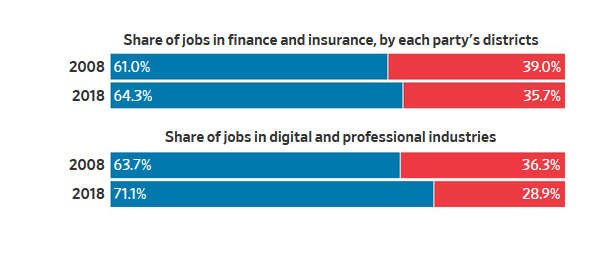
Red Industries: Republican districts, by contrast, hold growing shares of the nation’s agriculture, mining and low-skill manufacturing jobs, many of which do not require a college degree, have lower pay and are more exposed to overseas competition.
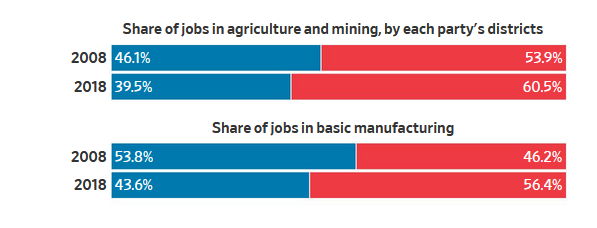
Look at the data another way—this chart shows where industries cluster—and the pattern becomes even clearer.
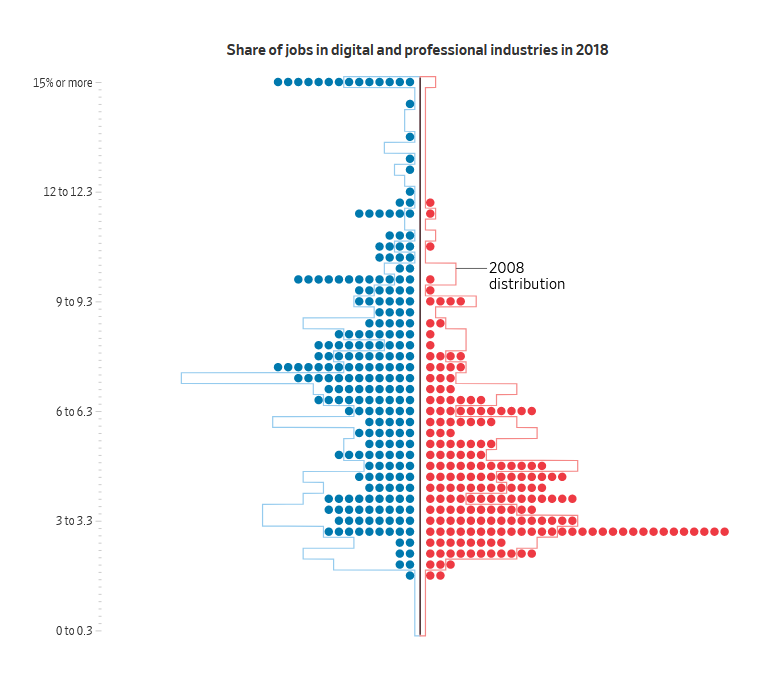
Low-skill manufacturing has a strong presence in Republican districts, particularly in more rural communities scattered across the country, from Arizona to Wisconsin.
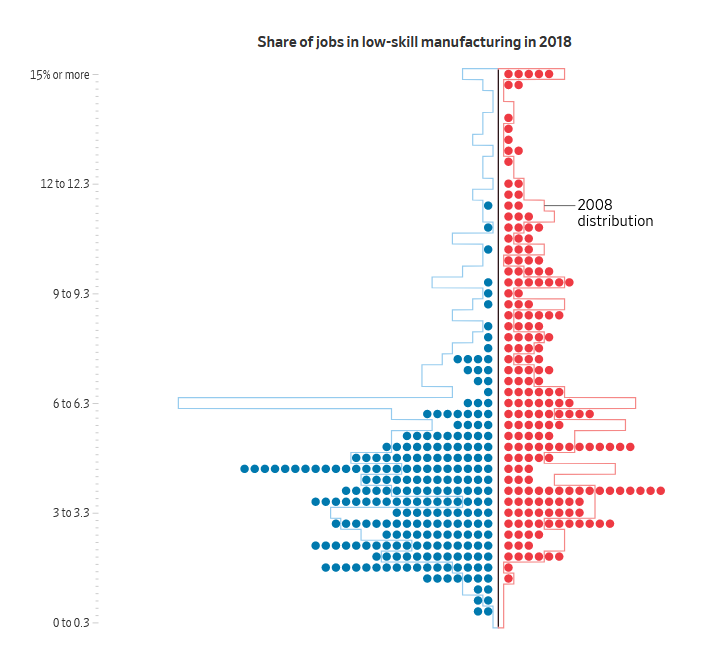
Location, Location, Location
The two parties represent different parts of the economy, in large part because they represent different kinds of places.
Once, the parties were geographically intertwined. But in 2010, the ‘tea party’ election wiped out Democrats in rural and working-class districts across the Midwest and Southeast. The 2018 midterms ousted Republicans from many suburbs.
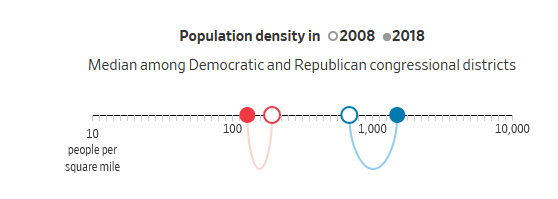
The Education Divide
People with college degrees are more concentrated in Democratic districts than in Republican districts.
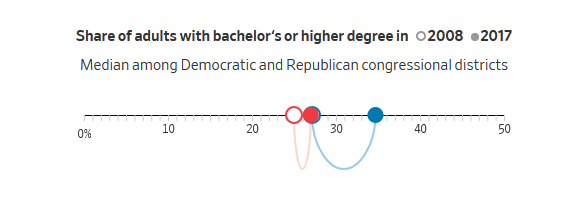
We have to sort through 17 Democratic districts with the highest concentrations of bachelors’ degrees before we get to the first GOP one, which is outside Dallas. In 2008, only 4 Democratic districts ranked higher than the top GOP district.
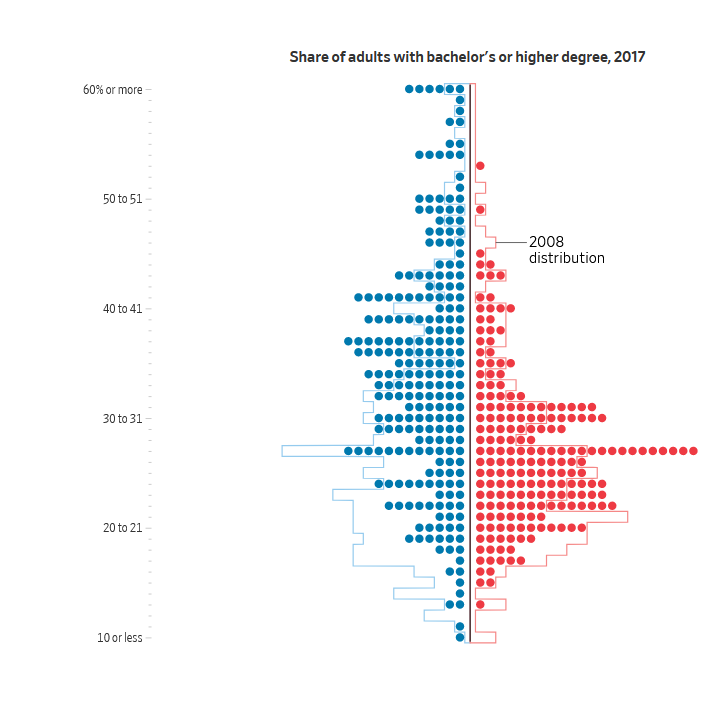
Why does this matter?
“When folks have less in common with one another, it’s hard to expect that they’re going to see the problem the same way,” said Roger Johnson, president of the National Farmers Union, “let alone recognize that a problem exists.”
Methodology: 2008 data was projected onto 2009 congressional districts, while 2017 and 2018 data is projected onto 2019 congressional districts.
“Low-skill manufacturing,” as defined by the Brookings Institution, includes industries that rely on little research and development investment and few technical and scientific workers. Food processing and production is often classified as low-skilled, for example.
Notes: Median household income rounded to the nearest thousand. Educational attainment only includes adults ages 25 and older.
Source: Brookings analysis of Emsi data and IPUMS-USA 1-year ACS microdata
.



